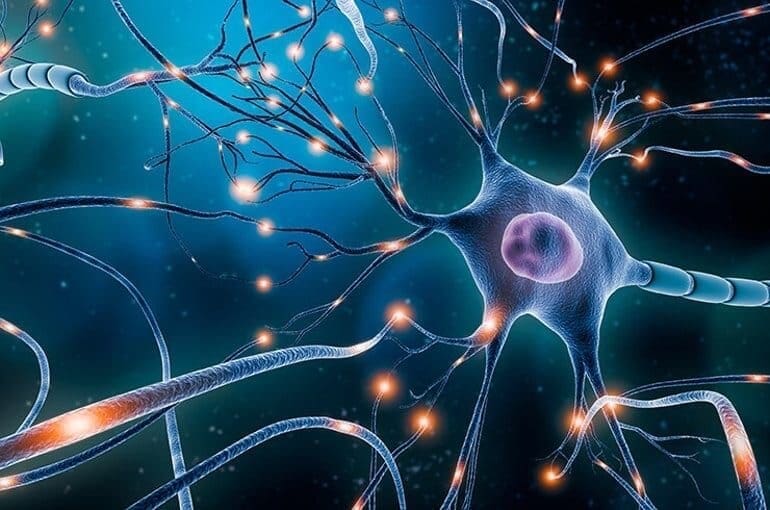Health
Breast cancer affects women of all ages after puberty across every country, with a higher prevalence in older age. According to the World Health Organization, in 2020, breast cancer emerged as the most common cancer globally, with 2.3 million diagnosis and 685,000 deaths. By the end of that year, 7.8 million women were living with a breast cancer from the past five years [1]. Moreover, National Cancer Institute of America and other research bodies reported that incidence of breast cancer is increased over the past four decades, with a 0.5% annual rise in recent years (2010-2019) [2].
However, breast cancer death rates are on a decline since peaking in 1989, falling by 43% up to 2020, which means 460,000 lives are saved [2]. This decline in mortality rates is seen across most racial/ethnic groups, except among American Indians/Alaska Natives, where it remains unchanged. Furthermore, Despite Black women having a lower incidence of breast cancer compared to White women, they face a 40% higher mortality rate, which doubles for those under 50 [2, 3]. Their survival rates are the lowest across all racial/ethnic groups for nearly all cancer types and stages.


Sirt6 against Breast Cancer
Sirtuin 6 (SIRT6) is an important protein naturally found in the cell nucleus. Along with other key benefits, SIRT6 affects important aspects of cell behavior and cancer development, including repairing DNA damage, maintaining metabolic balance, ensuring the stability of the genome and controlling cell death. Research studies suggest that SIRT6 plays a complex role in breast cancer, as it can both suppress and promote tumor growth through its regulation of cell death mechanisms. It has the ability to adjust the levels and effectiveness of molecules that promote (like Bax) or prevent (like Bcl-2 and survivin) cell death, depending on the situation.
A research study showed that overexpressing (increasing) the protein Sirtuin 6 reduces the stem-like properties of cancer stem cells (CSCs), which are known for their strong ability to initiate tumors [4]. In cancer cells, mutations often activate a pathway called phosphatidylinositol-3-kinase (PI3K) signaling (a common scenario in many cancers). SIRT6, when increased in these cells, can slow down cancer potential. This effect of SIRT6 has been observed in breast cancer within a mouse model [4]. The model indicated that active PI3K signaling with high levels of SIRT6 reduces cancer severity.
Further analysis revealed that overexpressing SIRT6 reduces PI3K signaling and lessen their ability to act like “stem cells,” which are known for starting a tumor [4]. Additionally, the SIRT6 changed the cancer’s metabolism in this study model. Interestingly, cancer cells without a PI3K signaling didn’t respond to SIRT6 in the same way. This shows that SIRT6 specifically targets cancer cells with active PI3K signal. Besides, SIRT6 also prevented cancer cells from forming tight clusters (tumor sphere), a key step in cancer development [4]. These findings on SIRT6 against breast cancer indicates SIRT6 could be a promising candidate for developing new cancer therapies, particularly for cancers with the PI3K pathway activated.
Another key anticancer action of SIRT6 is its interaction with the Runt-related transcription factor 2 (RUNX2) protein. Research study reported that this interaction between SIRT6 and RUNX2 helps regulate the metabolism and growth of cancer cells, especially in breast cancer [5]. Importantly, the RUNX2 protein aids cancer progression and spreading by altering glucose metabolism in cancer cells. It triggers a switch to aerobic glycolysis, a less efficient energy production method favored by cancer cells, known as the “Warburg effect.” This change from the more effective mitochondrial oxidative phosphorylation enables cancer cells to proliferate and metastasize more readily. However, on the other hand, SIRT6 counteracts the effects of RUNX2 by regulating metabolic pathways in the opposite direction [5]. When SIRT6 levels are increased, it can reverse the metabolic changes induced by RUNX2, such as reducing glycolysis (sugar metabolism) and enhancing mitochondrial oxidative phosphorylation, thereby potentially slowing down cancer progression.
Further, the RUNX2 also contributes to the suppression of SIRT6 expression, both at the gene level and after the protein is made [5]. This inhibition aids the metabolic pathways of cancer cells in a way that favors growth and spread. In breast cancer tissues or cell lines where RUNX2 is highly expressed, SIRT6 levels are found to be lower, highlighting the negative impact of RUNX2 on SIRT6 and, consequently, on the metabolic state of cancer cells [5]. That’s why, sufficient levels of SIRT6 is needed to reverse the changes in metabolic pathway by RUNX2, and thereby halt the progression of breast cancer.
Another study discovered that in breast cancer cells, an enzyme AKT1 phosphorylates SIRT6 (a chemical modification) at a specific site (Serine 338) [6]. This modification results in degradation and removal of SIRT6 by another protein, MDM2, that act as cell’s waste disposal system. The study found a link between the survival of breast cancer patients and the levels of SIRT6: patients with higher SIRT6 levels or lower levels of its phosphorylated form at Serine 338 experienced better outcomes. There was also an inverse relationship between the amount of SIRT6 and the level of activated (phosphorylated) AKT in breast tumor samples, suggesting that active AKT contributes to lower SIRT6 levels [6]. The findings showed that blocking AKT activity or preventing the phosphorylation of SIRT6 at Serine 338 helped maintain higher levels of SIRT6. This, in turn, reduced the growth of breast cancer cells and slowed the development of breast cancer tumors in animal model.
Interestingly, the study also revealed that altering SIRT6 levels affects the effectiveness of Trastuzumab (Herceptin), a breast cancer treatment [6]. They found that low levels of SIRT6 increased resistance to the drug, while enhancing levels of a non-phosphorylatable form of SIRT6 made resistant cancer cells more susceptible to the anticancer treatment. These outcomes suggest that enhancing SIRT6 stability could be a valuable strategy in treating breast cancer, especially for improving responses to treatments like Trastuzumab in patients who have developed resistance.
Conclusion
The above discussion on SIRT6 highlight its significant potential in the fight against breast cancer. Through its interaction with cellular pathways and specific proteins like RUNX2 and AKT1, SIRT6 acts as a key factor in controlling cancer cell growth, metabolism, and resistance to treatment. Its ability to reverse cancer-promoting metabolic changes and enhance the efficacy of treatments like Trastuzumab Offers opportunities for personalized cancer therapy. The evidence strongly supports SIRT6’s role in improving patient outcomes, particularly by increasing its levels or preventing its degradation. Thus, SIRT6 offers hope for more effective breast cancer management strategies, addressing the urgent need for advancements in cancer treatment.
References
- https://www.who.int/news-room/fact-sheets/detail/breast-cancer
- Giaquinto, A. N., Sung, H., Miller, K. D., Kramer, J. L., Newman, L. A., Minihan, A., Jemal, A., & Siegel, R. L. (2022). Breast Cancer Statistics, 2022. CA: a cancer journal for clinicians, 72(6), 524–541. https://doi.org/10.3322/caac.21754 https://pubmed.ncbi.nlm.nih.gov/36190501/
- Łukasiewicz, S., Czeczelewski, M., Forma, A., Baj, J., Sitarz, R., & Stanisławek, A. (2021). Breast Cancer-Epidemiology, Risk Factors, Classification, Prognostic Markers, and Current Treatment Strategies-An Updated Review. Cancers, 13(17), 4287. https://doi.org/10.3390/cancers13174287 https://www.ncbi.nlm.nih.gov/pmc/articles/PMC8428369/
- Ioris, Rafael M., Mirco Galie, Giorgio Ramadori, Jason G. Anderson, Anne Charollais, Georgia Konstantinidou, Xavier Brenachot et al. “SIRT6 suppresses cancer stem-like capacity in tumors with PI3K activation independently of its deacetylase activity.” Cell reports 18, no. 8 (2017): 1858-1868. https://www.cell.com/cell-reports/pdf/S2211-1247(17)30135-3.pdf
- Choe, M., Brusgard, J. L., Chumsri, S., Bhandary, L., Zhao, X. F., Lu, S., Goloubeva, O. G., Polster, B. M., Fiskum, G. M., Girnun, G. D., Kim, M. S., & Passaniti, A. (2015). The RUNX2 Transcription Factor Negatively Regulates SIRT6 Expression to Alter Glucose Metabolism in Breast Cancer Cells. Journal of cellular biochemistry, 116(10), 2210–2226. https://doi.org/10.1002/jcb.25171 https://pubmed.ncbi.nlm.nih.gov/25808624/
- Thirumurthi, U., Shen, J., Xia, W., LaBaff, A. M., Wei, Y., Li, C. W., Chang, W. C., Chen, C. H., Lin, H. K., Yu, D., & Hung, M. C. (2014). MDM2-mediated degradation of SIRT6 phosphorylated by AKT1 promotes tumorigenesis and trastuzumab resistance in breast cancer. Science signaling, 7(336), ra71. https://doi.org/10.1126/scisignal.2005076 https://pubmed.ncbi.nlm.nih.gov/25074979/
Share Article:
